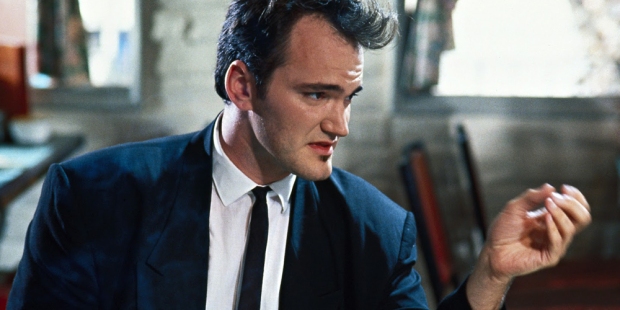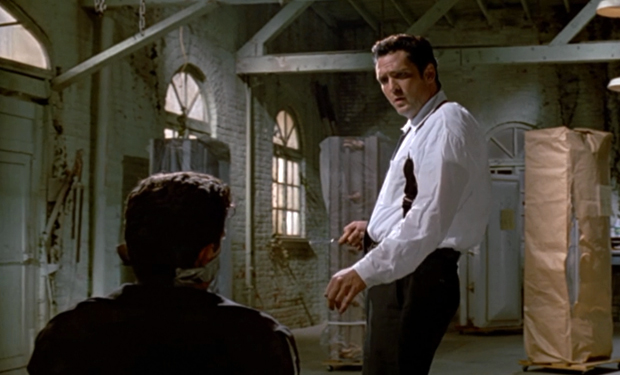Let’s talk about stepping over the lines of the safety zone through art and fashion. Perfectionism, violence, surrealism and eroticism. One name embodies it all – Guy Bourdin, a controversial and incredibly influential French photographer.

“My pictures are just accidents. I am not a director, merely the agent of chance”
I remember sitting in a class dedicated to analysis and the use of violence in the media, it was one of the few interesting, contemporary subjects I really enjoyed dealing with throughout that year’s semester. We studied numerous films and TV commercials while trying to detect over the top, degrading content, discussing whether the violent or sexual scenes are acceptable and art worthy or completely unnecessary, used only to shock and get attention.
After movies we focused on commercials and fashion editorials that are regularly filled with nudity, painfully obvious sexual allusions, glorification of drugs, weird, even gore images that have nothing to do with the product… One of the examples that stood out and made people react in a second were a couple of posters showing female legs in stockings and high heels, one of the photos was particularly provocative as it featured a woman photographed from the behind. She is wearing black stilettos and sexy fishnets and seems to be reaching for something or maybe falling down into the unknown, making us look at her body placed in an unusual, exploitative position.

That was one of Guy Bourdin’s most famous photographs, the one I had printed on a A4 size paper and glued to the wardrobe with a chewed up bubble gum. At the time, I didn’t know much about Bourdin’s work, I stumbled upon his photos in an old fashion magazine while I was sitting in my dentist’s waiting room. Where else, right? Who buys that shit anymore? While you’re sitting and waiting for a minor surgery that is about to take place in your mouth, you’re not happy or inspired or focused, you just need something to play with until your name gets called.
But, here’s the thing, of course I didn’t read a single article, I didn’t care about Keira Knightley’s style secrets interview, I totally ignored ‘this summer must have recommendation list’, but while flipping through those pages I saw something that made me go back and stare. It was a throwback to Bourdin’s 1979 Autumn campaign for Charles Jourdan brand. It is the same series of photos where the one from my wardrobe came from and each one was captivating because it was something I had not seen before. The photos in the magazine showed legs wearing high heeled shoes. Just legs, cut from the knee down. It was one of the many shoe editorials Bourdain made. The photos were surreal, I didn’t find them beautiful, attractive or aesthetically pleasing, but the fact that they gave me a moment of ‘out of this world experience’ was more than enough to intrigue me. I wrote down his name on my phone in case I forget later (the fact that he had a French name made me even more interested).

You are familiar with the epic line marketing campaign ‘experts’ love to (over)use whenever the opportunity presents itself: ‘SEX SELLS!’, they scream as they make a two-minute toothbrush commercial where half of the time we see a closeup of a very young and beautiful girl eyeing the man of her dreams while holding that brush. She is vigorously moving it around her mouth, in and out, and back in, smiling like she’s experiencing the greatest joy of her life. You’ve seen it all, they push sexual allusions into situations where it ends up looking far away from wanted sexy appeal, rather ridiculous and awkward. Sex is the most talked and thought about topic, right next to politics unfortunately, but placed in an artificial surroundings it just doesn’t work. But who cares, as long as it draws attention and invites us to comment the stupidity of the creative mind behind the genius idea.


This is where Bourdain was a master – direct, but not trashy , although ridiculous if you take things and his obsession with detail out of the context. And he’s just not all about sex like those Dolce & Gabbana gang rape adverts. Even though there will always be criticism towards Bourdain’s objectification of women and depersonalizing them, turning them into victims and subordinated, weak characters, I never decided to explore that side of his work and pulling it through feministic social critique filter. Maybe I was afraid it would made me not like his work anymore and I didn’t want to ruin something that was so mesmerizing to me. Maybe I just didn’t care in this case, because I don’t look at the models in simulated death scenes in Bourdain’s photos as the victims. Maybe a very primal sensation, a voyeur in me doesn’t let me turn against this world of sexual fantasy and making me accept it as simply controversial. Contorversial is cool, even necessary. Fashion is all about objectification and commodity, so it’s always a relief when I find someone whose work overpasses those elements shows creativity and expression in their purest form.
Using Tarantino’s quotes as a conclusion sentence is always the best idea:
Why graphic violence? BECAUSE IT’S SO MUCH FUN!


